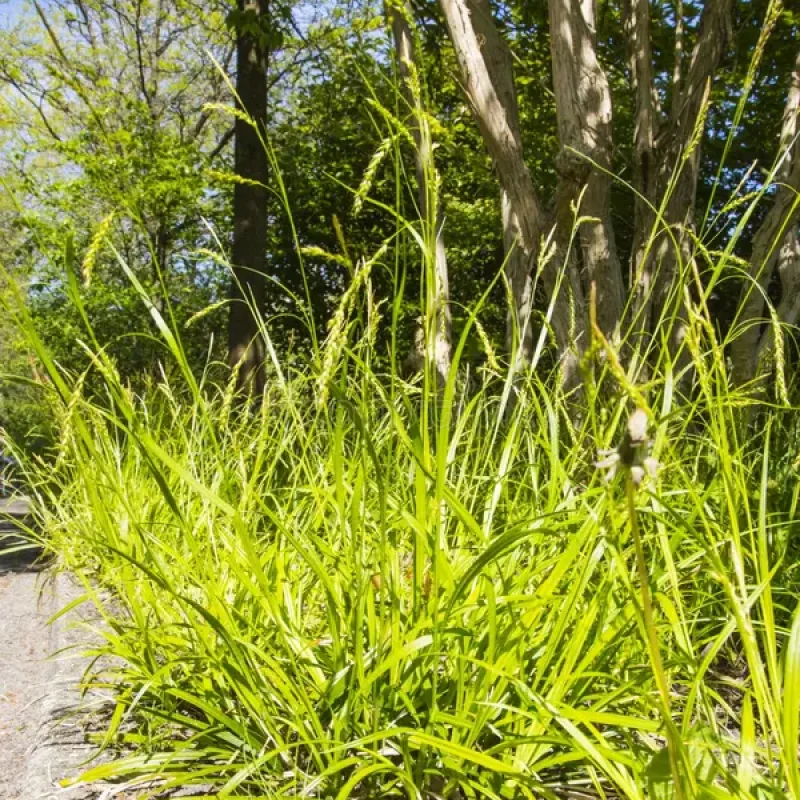Common Wood Sedge
Scientific name
Carex blanda
Description
Common wood sedge, scientifically known as Carex blanda, is a perennial sedge native to North America. Appearance: Common wood sedge typically forms dense clumps, with slender, arching stems that can reach heights of up to 1 to 2 feet (about 30 to 60 centimeters). The stems are typically smooth and leafy, with a slightly triangular shape. Its leaves are long and narrow, resembling blades, and they often have a glossy or shiny appearance. The plant's inflorescence consists of small, inconspicuous flowers arranged in dense clusters at the tips of the stems. Habitat and Distribution: Ecological Role: Common wood sedge plays a valuable ecological role in forest ecosystems, providing habitat and food for various wildlife species. The dense clumps formed by this sedge offer cover and nesting sites for birds, small mammals, and amphibians. Its seeds and foliage are consumed by a variety of wildlife, contributing to the overall biodiversity of forest habitats.
Planting conditions
Common wood sedge is commonly found in woodlands, forests, and shaded areas with moist to mesic soils. It prefers rich, well-drained soils and is often found in locations with partial to full shade. This sedge is distributed throughout much of eastern North America, from Canada to the southeastern United States.
Details
-
Plant height:
- Max 1.5m
-
Moisture level:
- Moist
-
Light conditions:
- Full sun
- Partial sun
- Shade
-
Soil type:
- Sandy
- Loamy
-
pH:
- Normal
-
Depth:
- Potted
- Bareroot
-
Eco Zone:
- 3a
- 3b
- 4a
- 4b
- 5a
- 5b
- 6a
- 6b
- 7a
- 7b
- 8a
-
Plant type:
- Ground Cover
-
Height:
- 30-60 cm


